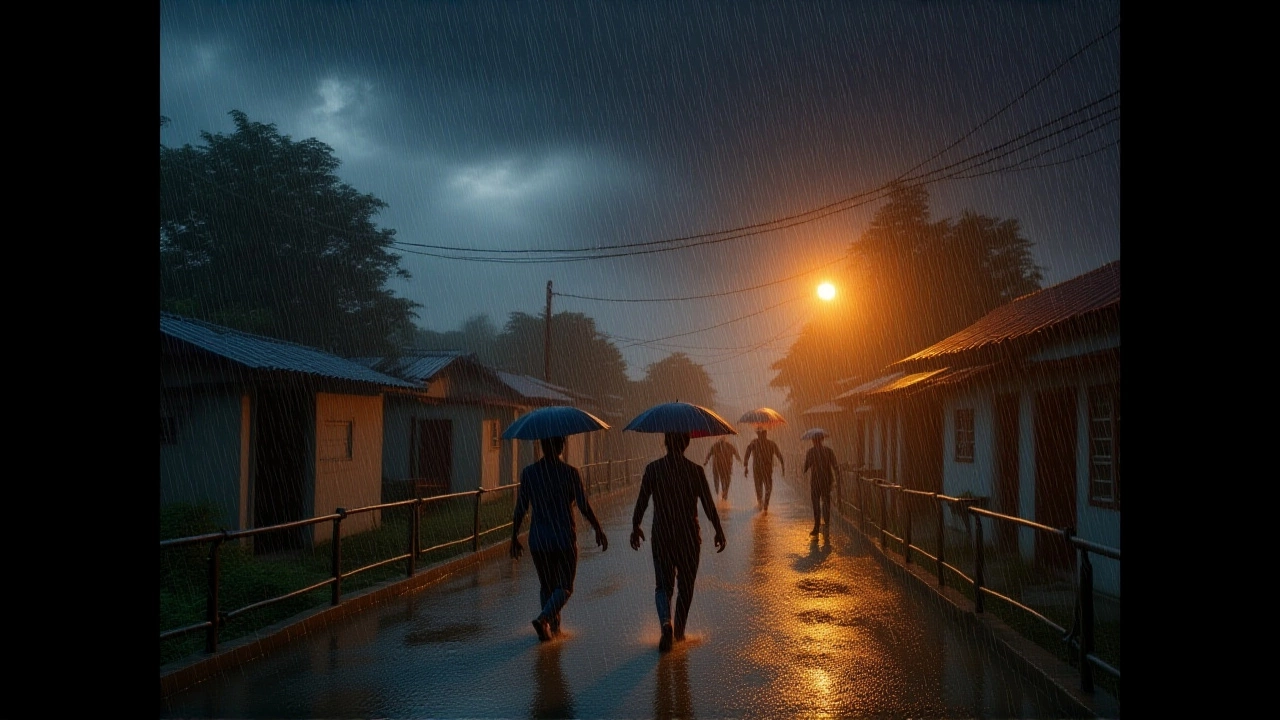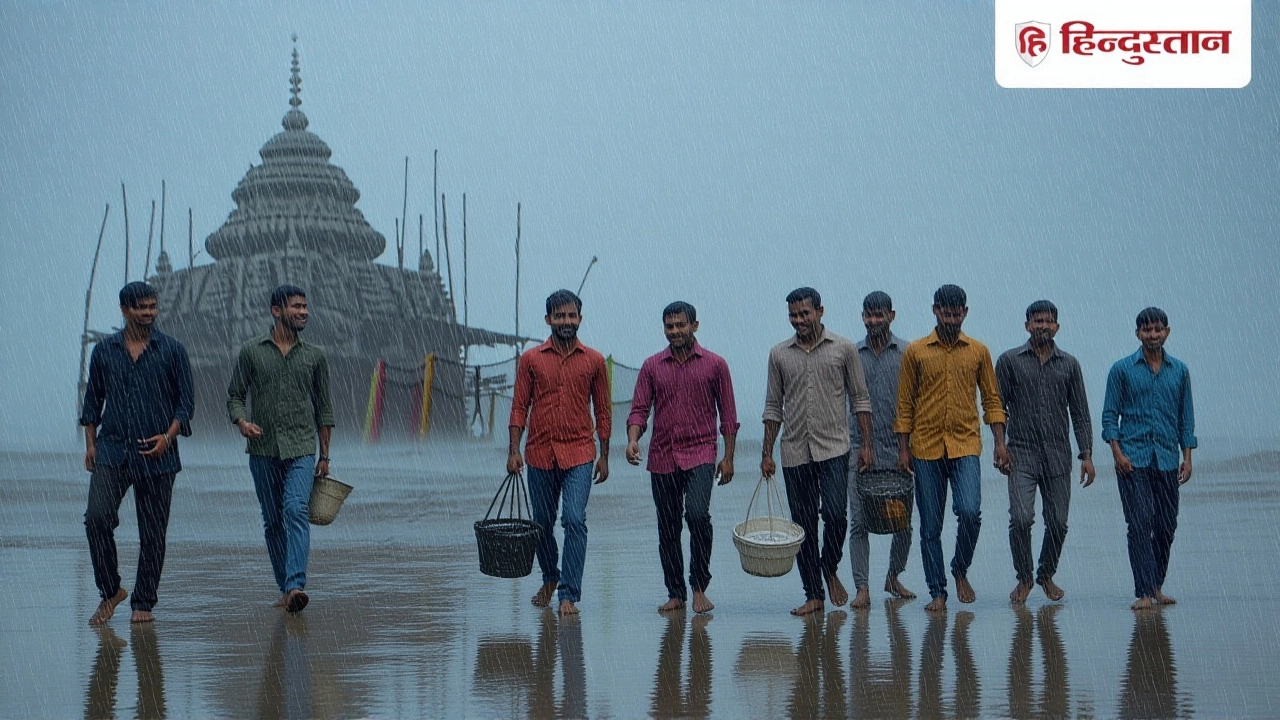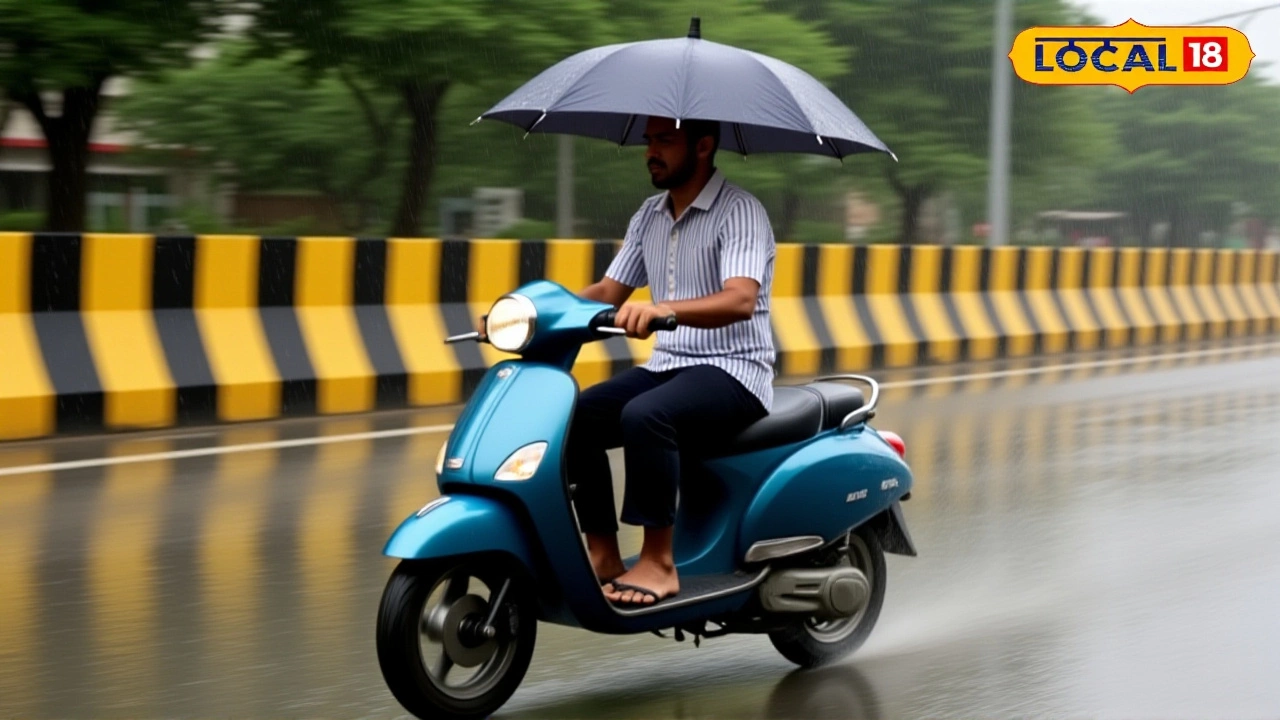
When Nitish Kumar, Chief Minister of Bihar learned that heavy rainfall had already claimed 16 lives in the past 24 hours, the shock quickly turned into a race against time.
By October 5, 2025, the storm had battered districts from Muzaffarpur—where four people perished—to Jehanabad, which reported three deaths. The India Meteorological Department (IMD) issued a red‑alert warning that the deluge would persist, urging residents to stay indoors and avoid travel.
Background: Monsoon Season Hits Its Peak
The Indian subcontinent’s monsoon typically eases in early October, but this year’s system stalled over the Gangetic plains, dumping unprecedented volumes of rain. In Bihar, the Karmanasha River swelled beyond its banks, flooding low‑lying villages and prompting emergency evacuations. The river, a tributary of the larger Ganga, has historically been a flash‑flood hotspot, yet the current rise—over 3.5 metres in parts of Rohtas and Kaimur—is unprecedented for this time of year.
Fatalities and Immediate Impact
Lightning strikes accounted for half of the deaths, a grim reminder that storms bring more than just water. In Muzaffarpur, a sudden bolt hit a crowded market, killing two vendors and injuring three others. In Jehanabad, a collapsed temporary shelter claimed three lives as residents sought refuge from the rising waters.
Beyond the death toll, thousands of families now face water‑logged homes, contaminated drinking water, and the loss of livestock. Health workers report a surge in water‑borne illnesses, from diarrhoea to skin infections, as stagnant pools become breeding grounds for pathogens.
Infrastructure and Transportation Disruptions
Transport arteries are snarled. Fallen trees have blocked railway tracks near Sasaram, halting two major passenger services and leaving commuters stranded for up to twelve hours. Meanwhile, Patna Airport saw nine flights either delayed or cancelled as visibility dropped below safe levels.
Urban centres like Patna, Saran, Siwan, and Gopalganj report chronic waterlogging that has stalled garbage collection, disrupted power supply, and forced schools to shut their doors. In Patna, traffic lights have short‑circuited, turning bustling avenues into slow‑moving queues of motorbikes and battered trucks.

Regional Spillover: Darjeeling and Nepal Crisis
While Bihar wrestles with its own calamity, the weather system has also wreaked havoc further east. In India’s hill state of West Bengal, the town of Darjeeling recorded more than 300 mm of rain in a twelve‑hour window, triggering landslides that buried roads and tea estates. Mamata Banerjee, Chief Minister of West Bengal announced compensation of ₹5 lakh for each family that lost a member, plus a home‑guard job for one surviving relative.
Neighbouring Nepal’s Ilam district, which shares a porous border with Darjeeling, saw similar devastation. According to a spokesperson for the Armed Police Force, 37 deaths were confirmed there, pushing the regional toll to 50. The Nepalese government has mobilised army units and helicopter units for rescue missions, though steep terrain and continuing rain hamper efforts.
Government Response and Relief Efforts
In Bihar, Nitish Kumar convened an emergency meeting with district magistrates, the state disaster response force, and the National Disaster Management Authority. He ordered the deployment of 20 rescue teams equipped with inflatable boats and high‑water vehicles to the most affected districts.
“We are deeply saddened by the loss of life and are working round‑the‑clock to bring relief to the affected families,” Kumar posted on X, adding that a special fund of ₹200 crore would be released for immediate relief and reconstruction.
In West Bengal, Development Minister Udayan Guha emphasised that rescue operations remain "extremely challenging" as continuous rain threatens to trigger further landslides. He also called for a temporary suspension of tourism activities in the hill districts to prevent additional casualties.

Future Outlook: Anticipating More Rain
The IMD’s forecast suggests that the system will linger over the eastern sub‑continent until Tuesday morning, with scattered thunderstorms likely to intensify over the next 48 hours. Experts warn that soil saturation levels are near critical thresholds, meaning any additional downpour could trigger new flash floods or landslides.
Hydrologists at the Indian Institute of Technology Patna have urged residents to heed evacuation notices, especially those living near riverbanks or on steep slopes. "We cannot afford complacency," said Dr. Ananya Singh, a senior researcher specialising in monsoon dynamics. "The pattern we’re seeing aligns with broader climate change trends—more intense, erratic rainfall events across South Asia."
Frequently Asked Questions
How are the flood‑affected families in Bihar receiving assistance?
The state government has set up relief camps in Muzaffarpur, Patna, and Rohtas, providing food packets, clean drinking water, and temporary shelters. Additionally, a ₹200 crore emergency fund is earmarked for rebuilding homes and repairing critical infrastructure.
What caused the high death toll in Darjeeling and neighboring Nepal?
Intense, short‑duration rainfall saturated the hilly terrain, triggering landslides that buried villages, roads, and tea gardens. In Nepal’s Ilam district, inadequate early‑warning systems and limited road access compounded the tragedy, leaving rescue teams struggling to reach victims promptly.
Will the ongoing rains affect the upcoming election schedule in Bihar?
Election officials have postponed polling in the most flood‑prone constituencies until the monsoon eases, fearing that travel disruptions could suppress voter turnout and jeopardise safety.
What steps are being taken to prevent similar disasters in the future?
Both Bihar and West Bengal are accelerating river‑bank reinforcement projects, upgrading drainage systems in urban areas, and investing in advanced weather‑radar networks to improve early‑warning capabilities.
How can citizens stay informed about the evolving weather alerts?
The IMD updates its website and mobile app in real time. Additionally, community radio stations and local government WhatsApp groups are disseminating alerts in regional languages to reach remote populations.
 Cricket
Cricket